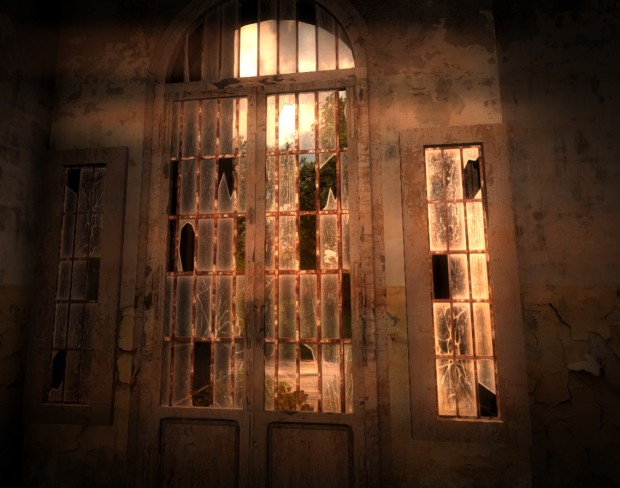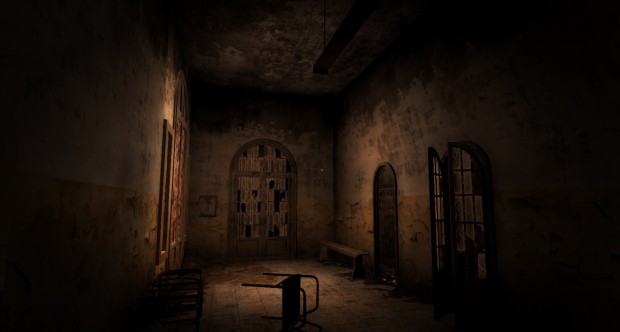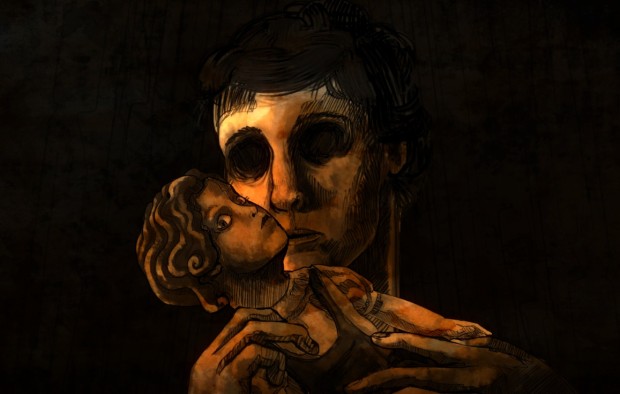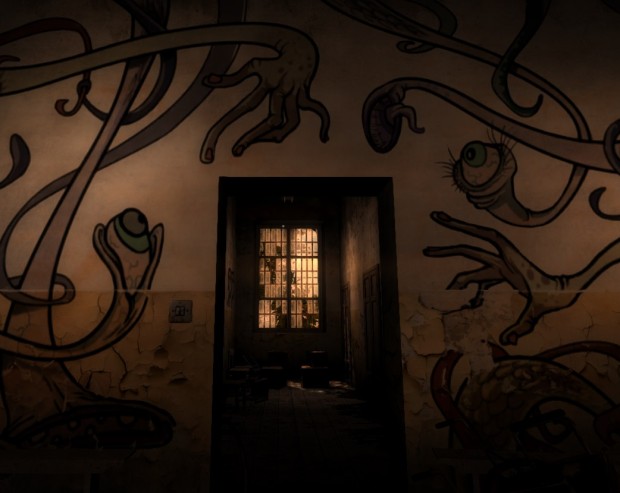A Sense of Place
A few years back, I had a free evening. So free, I went to the cinema twice. Ah, the good old days before children and such.
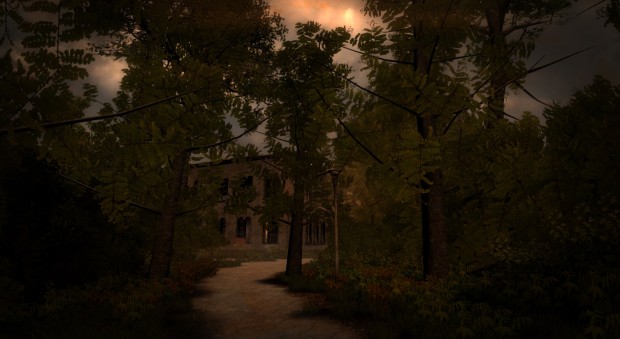
The opening of the demo sees you walk along a forest path to this walled-off building. It’s lovely, even on a machine as graphically limited as mine is.
Both the features I saw were in 3D, this being in the months not long after Avatar had convinced every producer in Hollywood that having a third D in your feature was now the only way to make money. Two films, two entirely different experiences, two very different ends of the spectrum.
(There is a point to all this, bear with me.)
Film 1 was The Cave of Forgotten Dreams, which is an amazing bit of work from Werner Herzog. He used the 3D to give you an unforgettable tour of a place you’ll never go to in real life. It’s a cave in France somewhere full of stone age paintings, and it’s off-limits to the public because your breath would destroy the 5000-year-old art. A wonderful film with a real sense of being somewhere, full of amazing visions and strange characters.
Film 2 was the first Thor movie, an entirely forgettable tour of a place you’ll never go to in etc etc. Not a great counterpoint to Film 1.
So what’s my point? Well, Avatar had just unleashed a tide of films all hoping to use this new tech to good effect. 3D makes you feel even more like you’re really there, immersed in the action or the locale. But not all the films were using it to their best effect. Some, like Cave of Forgotten Dreams, really took you to an unbelievable place and made you experience it (as Avatar did for me, first time around). Some were just flashing special effects at you and hoping some of them might lodge in your retina, which is what I made of Thor.
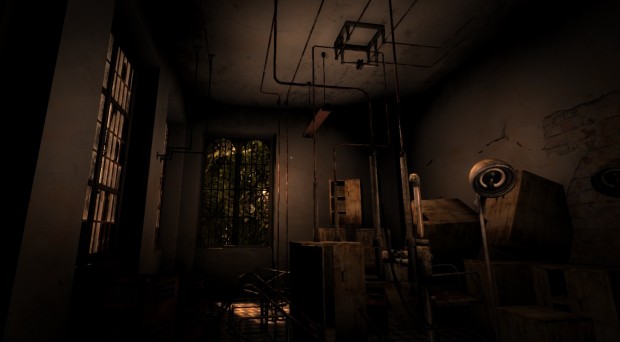
It’s not clear how long this place has been abandoned or why. But I’ll bet it’s nothing good. Maybe they screened Thor on movie night.
Tenuous Segue
And so to The Town of Light, a game from an Italian indie studio. It aims to transport you to a forgotten psychiatric hospital in the 1940s where you’ll live through a haunting experience based on a true story.
The tech in question here is the incoming Oculus Rift, a 3D headset that threatens to force me to upgrade all my graphics cards. At the same time as downgrading my social life still further. Damn you, computer games.
The game will see you explore an apparently deserted town. It’s in alpha right now, so much of the final content isn’t there yet (as many of the doorways I tried to open explained to me). But the idea to make you feel like you’re in a place is certainly there, as you roam through the quiet, still and beautifully-lit corridors of the hospital in question.
Who are you? What are you doing there? It’s not clear at the outset, which may well be intentional. Viewing the memories invoked by the character whose eyes you see through, you experience the tale of her upbringing in the hospital under difficult circumstances. It’s eerie, unsettling stuff, and I was hooked, wanting to find out more.
The other thing I find myself asking, though, is whether it’s a game or not.
This is really where I come back to the point I’m scrabbling to make. New tech brings new opportunities, new ways to tell stories through the medium of gaming. As with any new tech, though, there’s often an uncertain period where these new opportunities are explored. The Town of Light feels hampered in some ways by the genre of a computer game – a first-person shooter, in fact, although there’s no shooting to be done here.
Because I don’t have a Rift or a movement-enabling treadmill, I’m still a step away from the experience of walking through the hospital. It’s a good experience; the world is well-built and immaculately detailed. But I’m so used to computer games, I’m looking for the points of interaction, the ways to unlock the next clip of the story. It’s not made particularly obvious here, so I got stuck and struggled to work out what I was supposed to be doing.
Without help when I needed it, I got frustrated and wanted to move on. Exploring ruined buildings in real life, the thing you usually discover is that there’s nothing there and it’s kind of dull and depressing. This game needs a little work to avoid that.
I’m sure that will be worked on, of course, as this is still in development. Rough edges in translation and the odd bit of scenery clipping (one of which trapped me in the elevator when the door wouldn’t reopen, so I had to start again from the beginning) didn’t detract from the opportunity to investigate a mysterious ruin.
Perhaps the opacity is even partly intentional – discovering through exploration is a great game experience, and heaven knows most games hold your hand relentlessly when telling stories these days. It’s good to have a developer trust your imagination enough to let you come at it your own way without tooltips or prompts. I’m less sure if that makes it the kind of entertainment many gamers would expect, though.
This is an exciting project with lots of intruiging prospects. Thoughtful, mysterious and compellingly realised, it could certainly be the frontrunner of a new wave where games become even closer to film or books in terms of involving you in a place and story.
At the same time, however, the spectre of a poorly-made and frustrating puzzle game haunted me too. I’m interested enough by what I saw in this demo to expect the former outcome rather than the latter, and I’m looking forward to seeing more.
